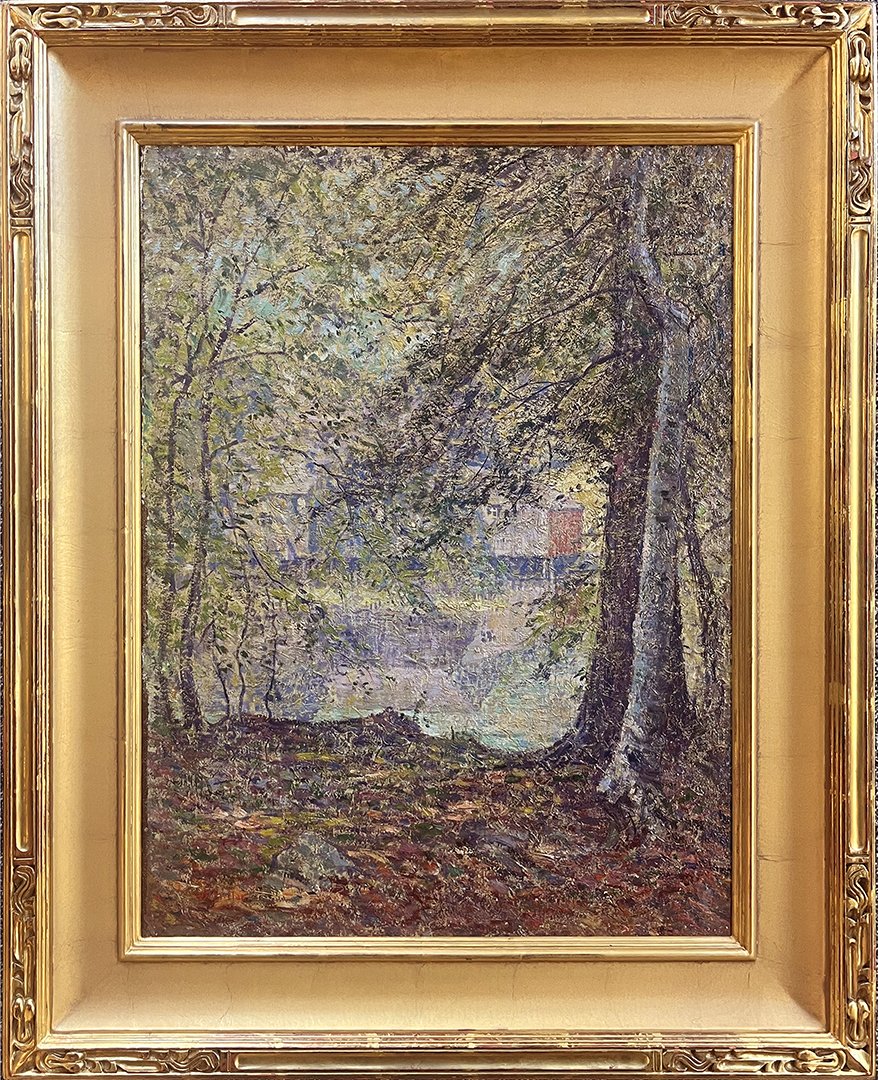John Francis Murphy
John Francis Murphy
Autumn Landscape, 1879
Oil on Canvas
9 x 15 inches, 17 1/2 x 23 1/2 inches in the frame
Signed Lower Right
ID: DH3799
John Francis Murphy, N.A. was born in Oswego, New York on December 11, 1853. In 1868, at the age of fifteen, Murphy went west with his family to Chicago, where he began painting billboards and theater backdrops. He also trained for a short time at the Chicago Academy of Design. In 1874 he moved to New York where he was employed as an illustrator.
He started sketching in the Adirondacks (where he met Winslow Homer), then to open a studio in the Tenth Street Studio Building in New York City. Primarily a self-taught artist, he depicted the coastal flatlands of New York and New Jersey and similar countryside in New England.
In 1886, Murphy made a six-month trip to France, where he deepened his familiarity with the work of the French Barbizon painters. In middle-period works, such as New England Landscapes, Murphy was influenced by A. H. Wyant, George Inness, Homer Dodge Martin and the Barbizon school painters Corot, Rousseau and Daubigny. He spent summers at Arkville in the Catskill Mountains from 1887, and Wyant's presence there between 1889 and 1892 had a pronounced influence on Murphy's developing Tonalist style. After 1900, Murphy painted some of his finest oils, in which he achieved an almost pure tonal unity.
He exhibited at the National Academy of Design 1876-1921 (in 1885 he received the second Hallgarten prize for his painting Tints of a Vanished Past), at the Brooklyn Art Association 1878-1885, at the Boston Art Club 1881-1909, at the Pennsylvania Academy of Fine Art 1884-1885, 1898-1901, 1908-1911, 1916, 1921, at the Society of American Artists 1887, 1902, at the Columbian Exposition (Chicago) 1893, at the American Water Color Society 1894, at the Art Club of Philadelphia 1899, at the Paris Exposition 1900, at the Pan-American Exposition 1901, at the Charleston Exposition 1902, at the St. Louis Exposition 1904, at the Corcoran Gallery 1907-, at the Salmagundi Club 1911, and at the Pan-Pacific Exposition (San Francisco) 1915.
His works are represented at over 50 museums including the Smithsonian American Art Museum, the National Gallery of Art, the Metropolitan Museum of Art, the Art Institute of Chicago, the Museum of Fine Arts, Boston, the Portland Art Museum, The Hudson River Museum, and the Butler Institute of American Art.
Biography from AskArt via The Artisfun Gallery





